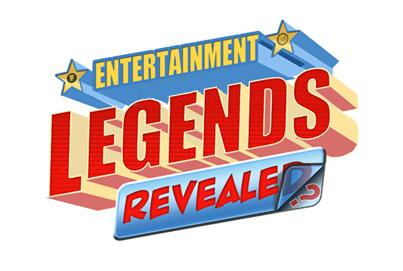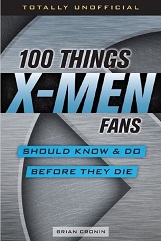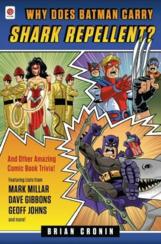Did Jane Foster Become a Scientist In Thor Due to a Suggestion from a Scientific Advisor on the Film?
MOVIE URBAN LEGEND: Jane Foster became a scientist based on a suggestion by a scientist advising on the film.
It is always interesting to see how characters evolve from the beginning of a screenplay until they end up on the silver screen. We’ve seen in the past how just a re-written song took Elsa from the villain of Frozen to one of its heroes and we’ve also seen how Disney’s Beauty and the Beast was almost completely re-written to make Belle more of a feminist. This was also the case with Jane Foster in the 2011 hit Marvel film, Thor.
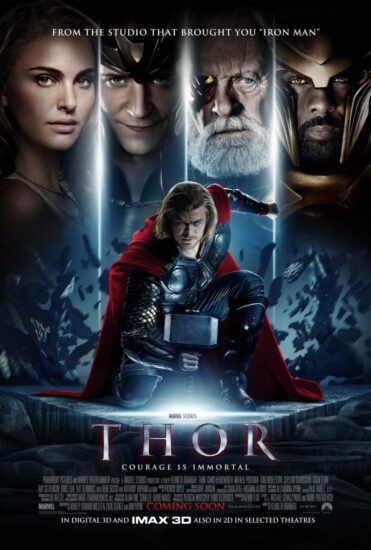
Natalie Portman starred as Foster, who is an astrophysicist in the film, forced to deal with the contrast between her belief in science and Thor’s seeming proof of the existence of magic. Of course, astrophysicist is a good deal different than Jane Foster’s career in the Thor comic books, where she was a nurse for decades before eventually becoming a medical doctor, as well. As the story goes (as suggested to me by my pal, Travis Pelkie), Marvel got the idea to make Jane a scientist from one of the scientists who helped Marvel as part of the Science and Entertainment Exchange, a project of the Naional Academy of Sciences that helps advise filmmakers about the science in their films.
Is that true?
It does not appear to be true, no.
The story gets repeated a lot, and it was even repeated by Sean Loverd, the national director of the Science and Entertainment Exchange, who spoke of the impact that Sean Carroll, a scientist who volunteers at the Exchange, had on Thor. Loverd noted to the Hollywood Reporter:
Perhaps more importantly, Carroll also inadvertently helped flesh out Portman’s character at that consulting session. He suggested to the filmmakers that the film’s story might make more sense if Portman were a physicist studying Einstein-Rosen bridges, rather than what she was in the comics: a nurse.
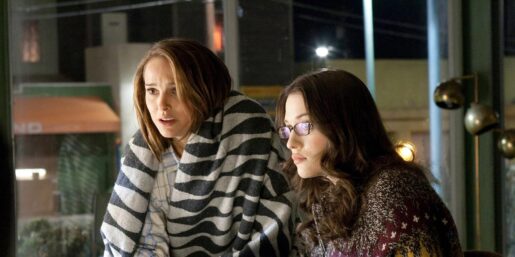
Natalie Portman signed on to “Thor” before there was a script in place, mostly because of the involvement of director Kenneth Brannagh on the project (Portman once said she saw Brannagh’s adaptation of Shakespeare’s “Much Ado About Nothing” hundreds of times). She told the Los Angeles Times: “I signed on to do it before there was a script. And Ken, who’s amazing, who is so incredible, was like, ‘You can really help create this character.‘”
Sean Carroll and the Exchange did, in fact, work with the filmmakers on the film before the script was finished. Carroll (who is a research professor in the Department of Physics at the California Institute of Technology, also known as CalTech) wrote about the experience on the Exchange’s website:
Unlike “TRON: Legacy”, where we came in after the screenplay had been drafted, on “Thor” we came in near the beginning. Marvel had done a lot of work on the idea, but there wasn’t yet a script. The Exchange set up a consult meeting with director Kenneth Branagh, the screenwriter, and a few people on the design and production side of things, along with three scientists — Jim Hartle from UCSB [University of California, Santa Barbara], Kevin Hand from JPL [Jet Propulsion Labortary, which is managed by Caltech], and myself. We bandied around lots of issues relating to the Thor universe and how it fit in with Marvel’s bigger plans. Once there was a script, I came in to read it and offer some more comments.
However, Carroll also specifically noted that when they came back with the script, the filmmakers had arrived on the idea of making Jane Foster a scientist on their own, but the Exchange got to influence the character BEYOND just simply “she’s a scientist.” Carroll noted:
Kevin Feige, president of production at Marvel Studios, is a huge proponent of having the world of these films ultimately “make sense.” It’s not our world, obviously, but there needs to be a set of “natural laws” that keeps things in order — not just for Iron Man and Thor, but all the way up to Doctor Strange, the Sorcerer Supreme who will get his own movie before too long. The thinking here is very much based on Arthur C. Clarke’s “any sufficiently advanced technology is indistinguishable from magic.”
That’s the other area where we science consultants were able to help out: in shaping Natalie Portman’s character of Jane Foster. In the original comic books Foster was a nurse, but they wanted to update her considerably for the movie. So they hit on the idea that she could be a scientist, but what kind of scientist? (I argued that she be an experimental physicist.) What kind of position would she hold? Could there be tension with her academic supervisor? What kind of posters does a young physicist have on her apartment wall?
Right from the get go, as soon as Natalie Portman was cast back in July 2009, Marvel made it clear that Foster was going to be different in the film, stating in their press release about the news, “In the early “Thor” comics, Jane Foster was a nurse who became Thor’s first love. The character will be updated for the feature adaptation.” Similarly, when Kat Dennings was cast later in 2009 her character was described in casting notices in October 2009 as working for a scientist (clearly Jane Foster, although Marvel used the name “Kate Spelling” in the casting notices to avoid giving away too much about Foster’s role in the film). So it appears as though Marvel came up with the scientist idea themselves (it plays pretty well into the whole “woman of science/man of magic” angle). I asked Carroll himself and he recalled that they were already playing with the idea themselves before talking to the Exchange.
This isn’t to diminish the impact of the Exchange, of course, as they clearly had a notable impact on the film, including how Foster was portrayed (and heck, Carroll’s influence very well could be why she was specifically a physicist in the film). One area where Carroll played a major role was with regards to the Rainbow Bridge (the way that Asgardians traveled from Asgard to Midgard, also known as Earth). Carroll relayed the following amusing exchange:
There is one phrase used in the movie that I think is directly attributable to my input: “Einstein-Rosen bridge.” This came about from a conversation between producer Kevin Feige and me that went something like this:
KF: We need the Bifrost Bridge to provide a way for the characters to travel great distances in space in a very short period of time.
SC: Sure, you probably want to say that it makes use of wormholes.
KF: Well, we can’t call it a “wormhole.”
SC: Why not?
KF: Sounds too Nineties.
SC: I suppose … you could call it an “Einstein-Rosen bridge.” Means the same thing.
So naturally, in the finished film, Jane Foster calls it an Einstein-Rosen bridge, and someone says “what’s that?”, and she replies “it’s a wormhole.”
Hilarious!
But anyhow, I am going with the legend as..
STATUS: False
Thanks so much to Sean Carroll for the information and for all his great work. Plus, thanks to the Hollywood Reporter, the Los Angeles Times and the Science and Entertainment Exchange for the awesome quotes. And thanks to Travis Pelkie for suggesting this one!
Be sure to check out my archive of Movie Legends Revealed for more urban legends about the world of films. Click here for more legends about superhero films.
Feel free (heck, I implore you!) to write in with your suggestions for future installments! My e-mail address is bcronin@legendsrevealed.com.
Tags: Jane Foster, Natalie Portman, Sean Carroll, Thor
